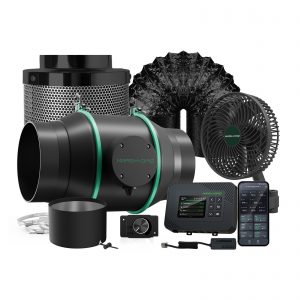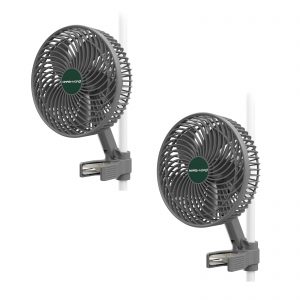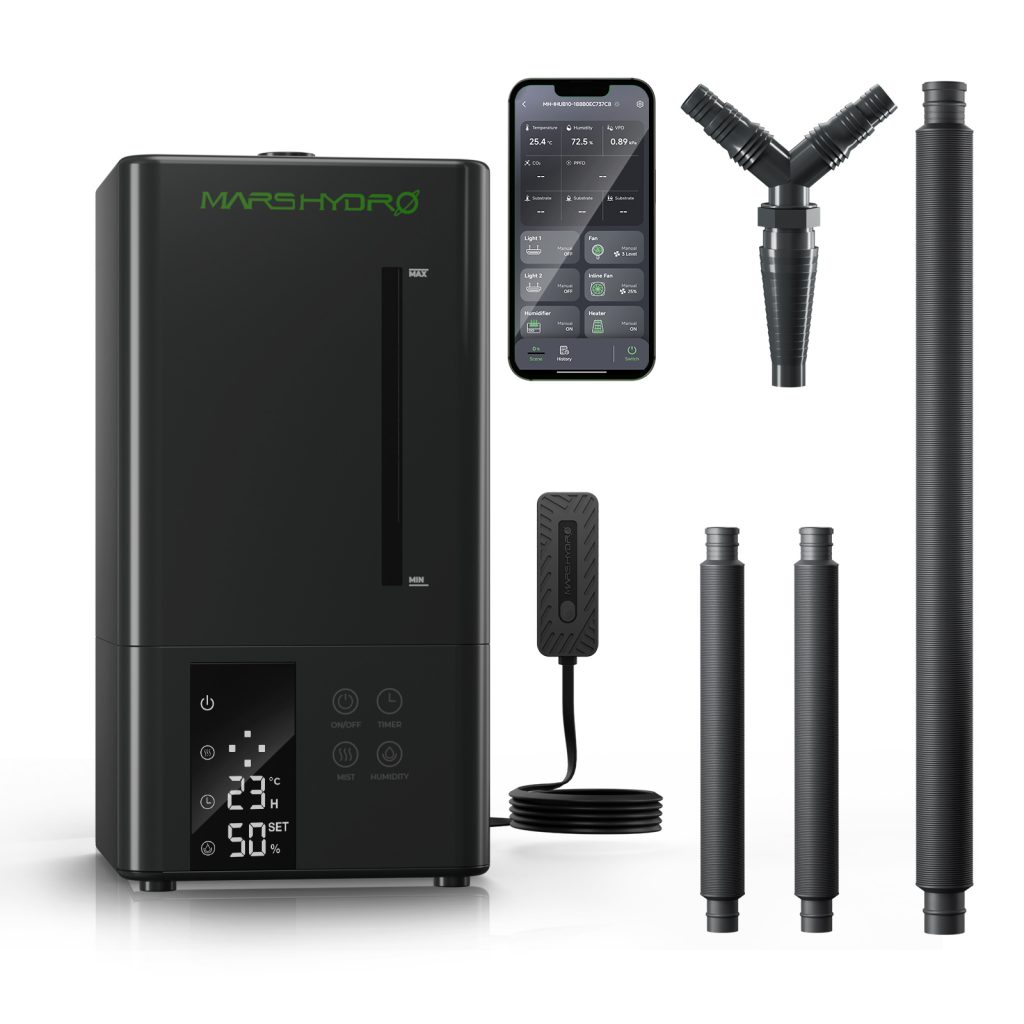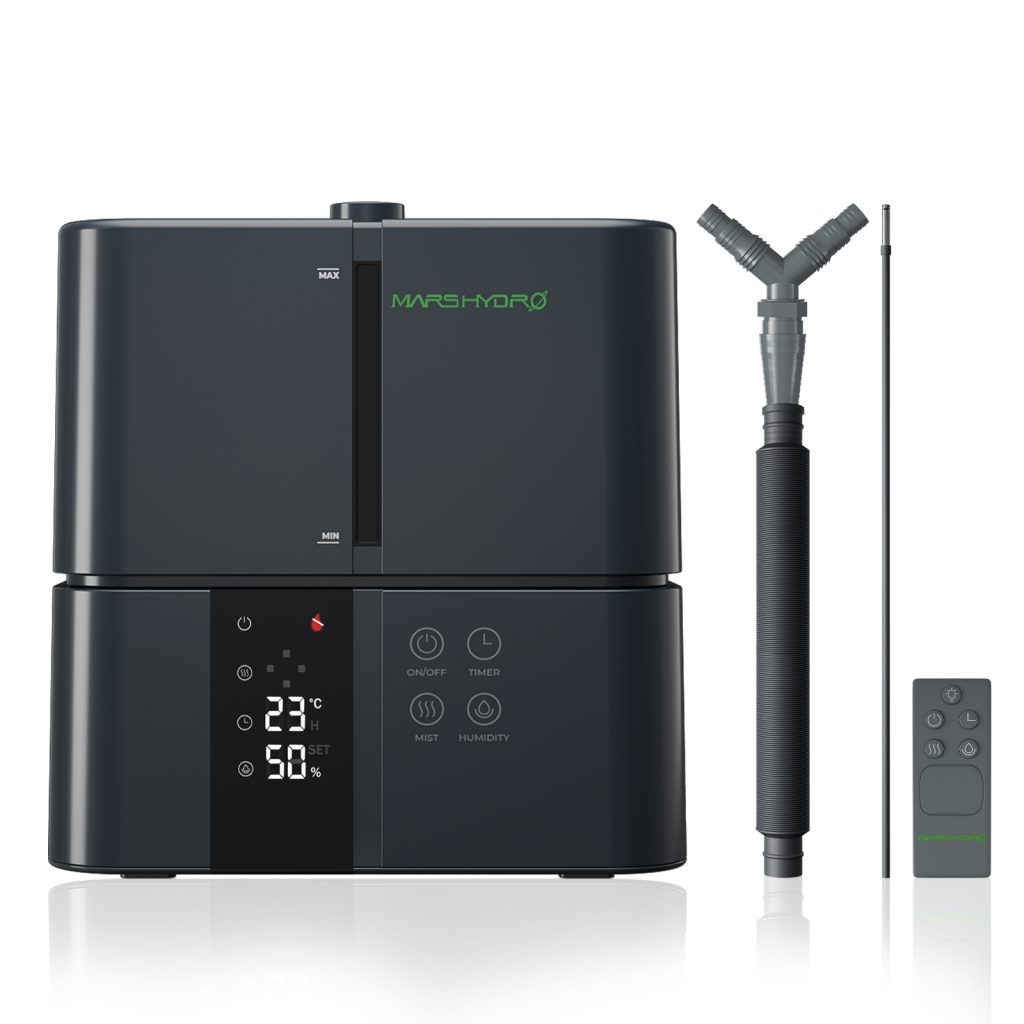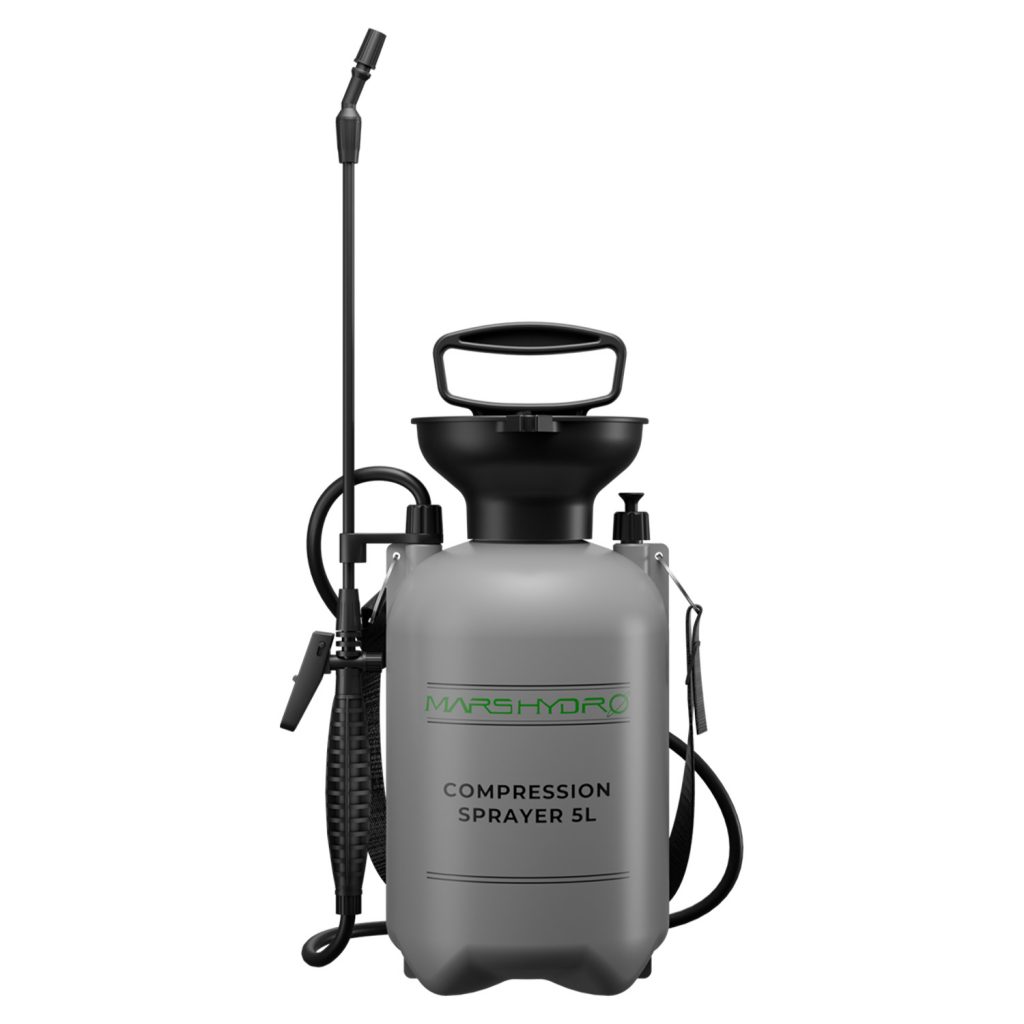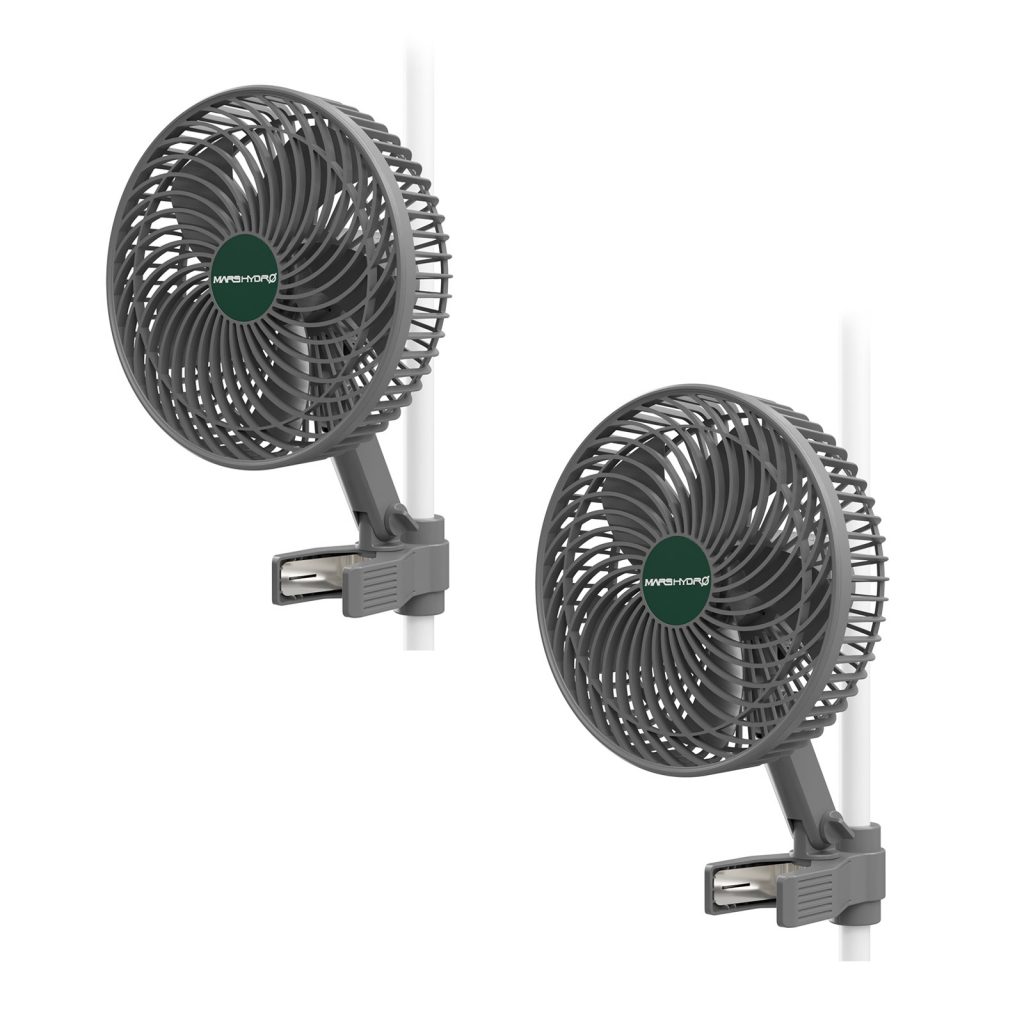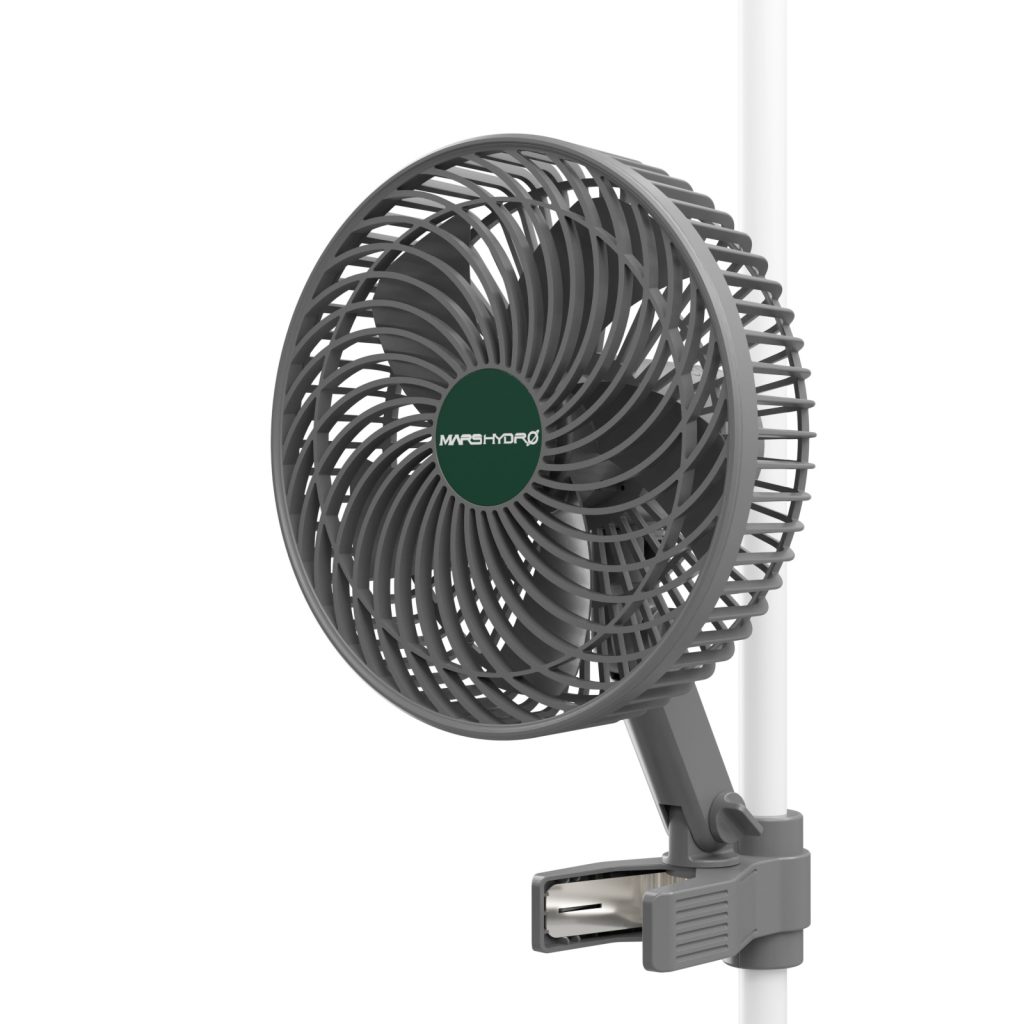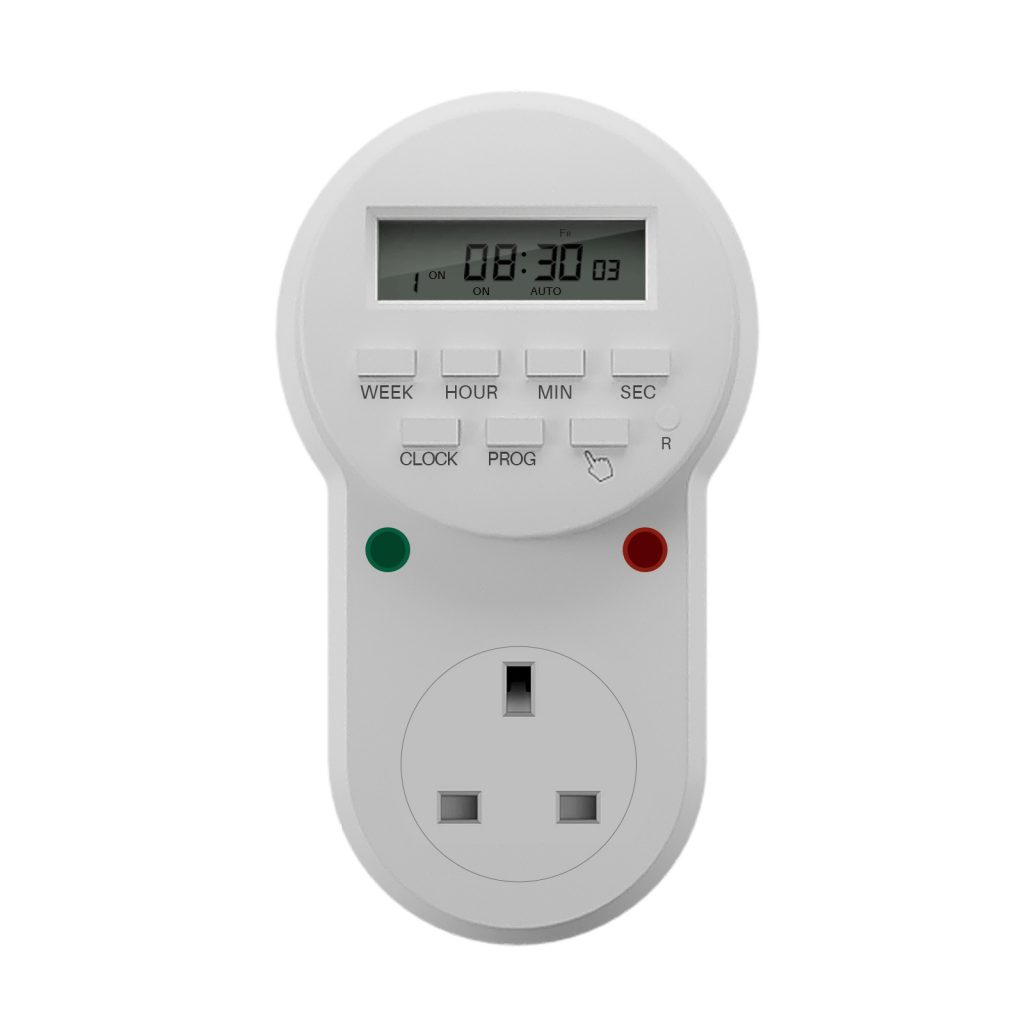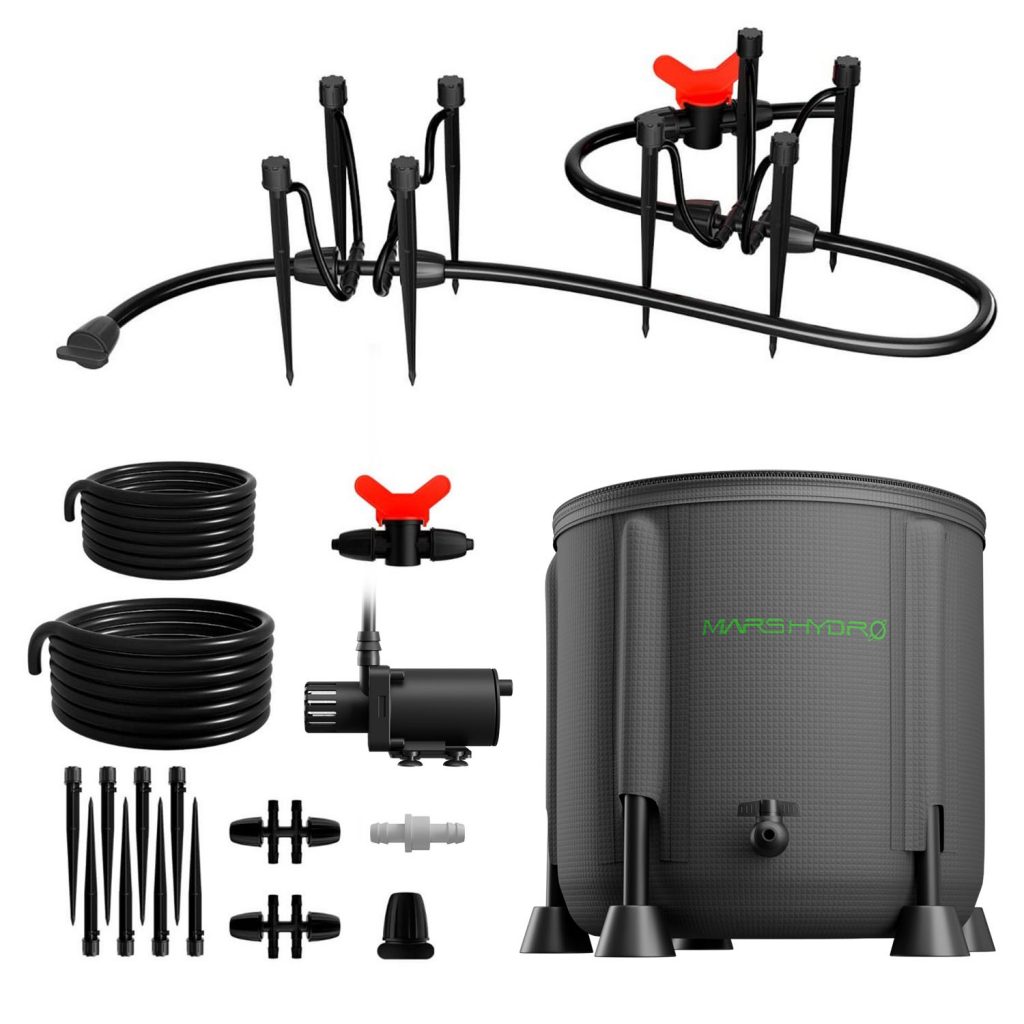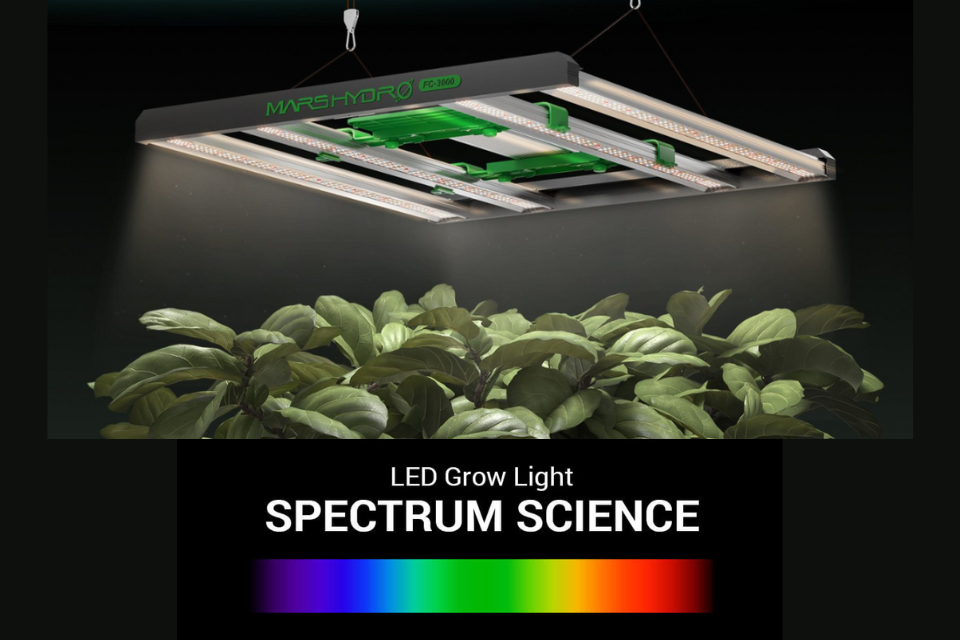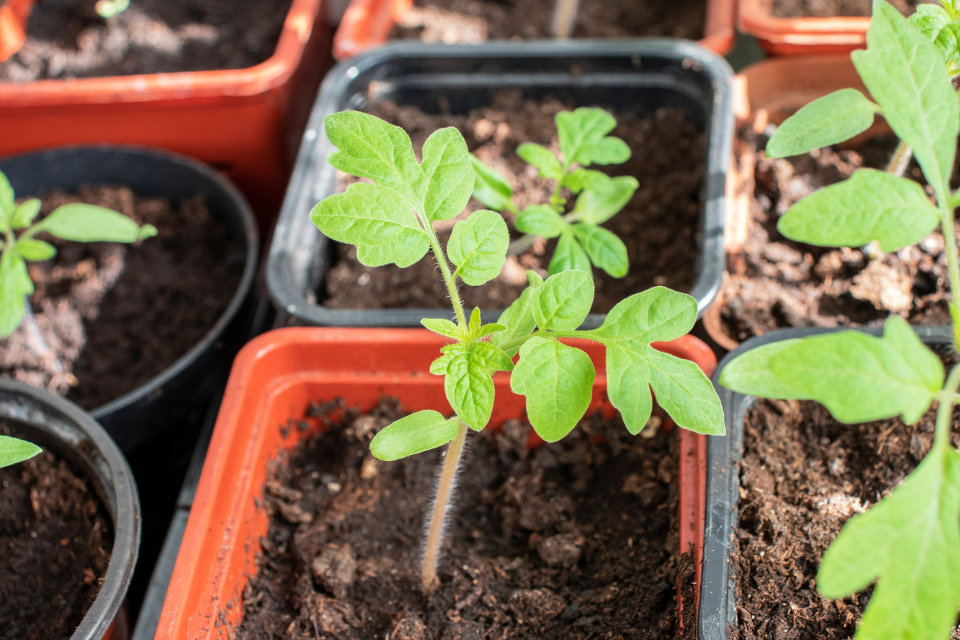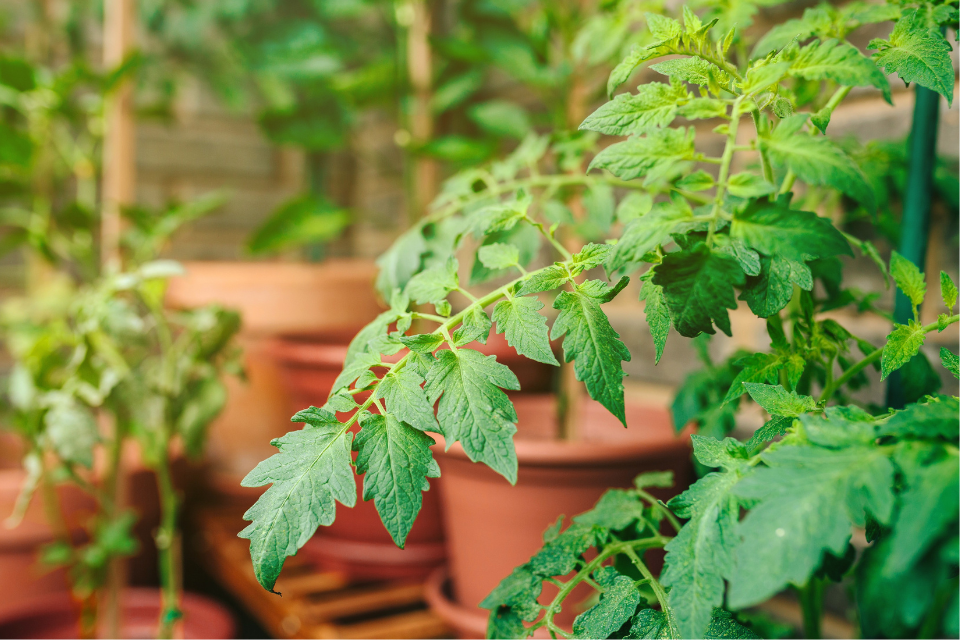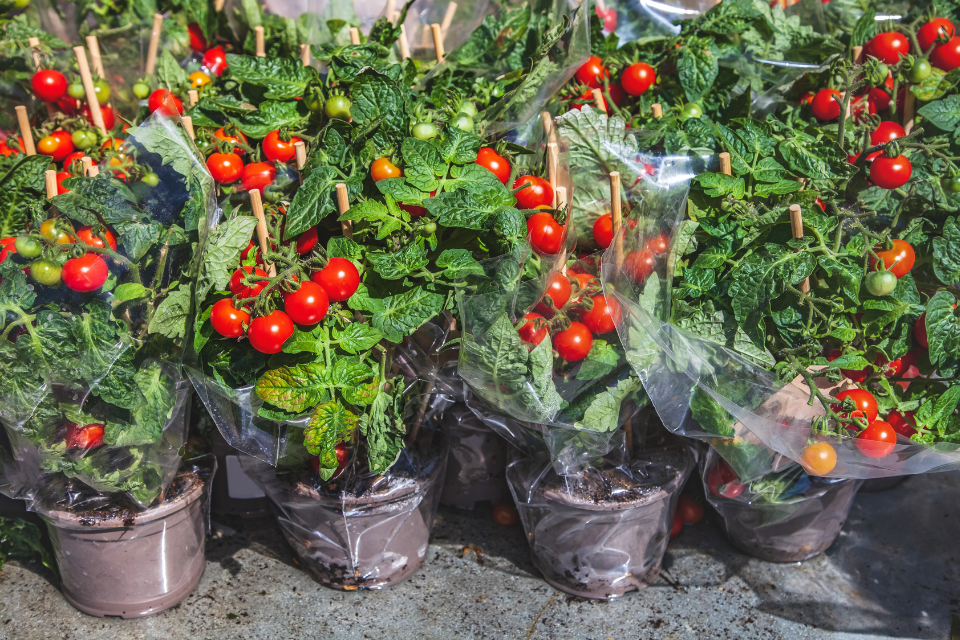The Science Behind Full-Spectrum Grow Light and Plant Growth
As indoor gardening grows in popularity, LED grow lights have become a vital tool for achieving healthy and bountiful plants. These lights deliver the ideal light spectrum, enabling gardeners to cultivate vibrant plants year-round. With a wide variety of LED grow lights on the market, the key difference lies in the spectrum science.
That’s why we’ve created this comprehensive guide— to equip you with the knowledge to select the ideal full-spectrum grow lights for your garden. Let’s explore the science behind full-spectrum lighting and plant development!
Table of Contents
What Is the Light Spectrum
Light spectrum refers to the entire range of wavelengths of electromagnetic radiation that we can perceive as light, including both visible and non-visible light. This spectrum extends from gamma rays, which have the shortest wavelengths and the highest energy, to radio waves, which have the longest wavelengths and the lowest energy.
The visible light spectrum is the part of the electromagnetic spectrum that the human eye can detect, with wavelengths ranging from 380 to 750 nanometers(nm). Within this range, light is divided into different colors, each color corresponding to a specific wavelength, from violet at the shortest wavelengths to red at the longest.
Beyond the visible range is the non-visible light spectrum. The ultraviolet (UV) region lies just below 380 nm and includes wavelengths that are shorter and more energetic than visible light. On the other end of the spectrum, infrared (IR) light begins just above 750 nm and extends into much longer wavelengths. While also invisible to us, IR radiation is often felt as heat.
The entire light spectrum plays a role in various scientific, technological, and biological processes. In the context of plant biology, for example, specific portions of the light spectrum – particularly the blue and red regions of visible light – are essential for photosynthesis, while other parts, like UV and IR, may influence growth, development, or stress responses indirectly.
Effects of Different Visible Spectra on Plant Growth
The visible light spectrum consists of red, blue, green, yellow, and orange light—each playing a unique role in plant development, including germination, vegetative growth, flowering, and fruiting.
Red Light
Red light, with wavelengths between 620 and 750 nm, plays a crucial role in plant growth. It’s a key driver of photosynthesis and supports various stages of plant development.
Plants absorb red light through a pigment called phytochrome, which switches between two forms: Pr (which absorbs red light) and Pfr (which absorbs far-red light). When exposed to red light, the phytochrome shifts to its active Pfr form, triggering the production of gibberellins—hormones that stimulate seed germination. This process only occurs when both red light and water are present, ensuring seeds sprout under favorable conditions.
Red light also boosts the production of auxins, another class of hormones that promote cell elongation and expansion. These hormones are essential for processes like stem growth and root development.
In terms of reproduction, red light plays a significant role in flowering. In long-day plants, it acts as a signal to activate genes that initiate flowering. In short-day plants, it activates genes that delay flowering, allowing the plant to bloom when conditions are ideal.
Additionally, red light helps plants detect shade. When a plant is overshadowed by others, the ratio of red to far-red light changes—chlorophyll absorbs red light, while far-red light is reflected. A higher proportion of far-red light signals the plant that it’s shaded, prompting a shade avoidance response that causes the stem to grow taller in search of more light.
Blue Light
Blue light, with wavelengths between approximately 450 and 490 nm, is one of the most crucial parts of the light spectrum for plant growth. It has a short wavelength and high energy, making it especially effective in driving several key developmental processes.
How does it do this work? Blue light plays a central role in photosynthesis by exciting electrons in chlorophyll molecules, powering the light-dependent reactions that convert light energy into chemical energy. While it doesn’t directly increase chlorophyll production, it is efficiently absorbed by chlorophyll, making it crucial for energy capture.
Blue light affects plant development by influencing the distribution and activity of auxins. Auxins are primarily produced in the apical meristems, the growing tips of shoots and roots. In response to light, they tend to accumulate on the shaded side of a plant shoot, causing those cells to elongate more and bend the plant toward the light source. This is the basis of phototropism.
Additionally, blue light signals stomata to open by activating specific receptors in the guard cells surrounding the stomata, allowing for the uptake of carbon dioxide and release of oxygen, and water vapor loss through transpiration.
Green Light
Green light, with wavelengths ranging from approximately 495 to 570 nm, sits in the middle of the visible light spectrum. While it isn’t as crucial for plant growth as red and blue light, it still contributes to several important physiological processes.
Green light takes part in regulating plant architecture by promoting the growth of shoots and inhibiting root growth. This effect can be beneficial in controlled environments like aeroponic or hydroponic systems, where space for root expansion is limited. Additionally, green light penetrates deeper into the plant canopy than other wavelengths, reaching lower leaves that might otherwise be shaded. This increases photosynthetic activity in those leaves, boosting overall biomass production.
Moreover, green light stimulates the production of secondary metabolites, such as flavonoids, phenolic acids, and carotenoids. These compounds aren’t directly involved in growth but play essential roles in plant survival, helping them respond to environmental stresses.
Yellow Light
Yellow light, with wavelengths around 570-590 nm, is part of the visible spectrum that plants can absorb, but it is less effective in driving photosynthesis. While it may not significantly impact plant growth on its own, yellow light can interact with other wavelengths to influence growth responses.
For example, combining blue and yellow light can promote root elongation in Arabidopsis thaliana seedlings, while red and yellow light together can enhance photosynthetic pigment production in lettuce. Yellow light may also play a role in helping plants respond to environmental stresses like drought and salinity.
Orange Light
Orange light, with wavelengths between 590 and 620 nm, may not be as crucial for plant growth as red or blue light, but it still plays an important role in promoting healthy, productive plants.
Orange light has been shown to positively affect the growth of certain plants, such as tomatoes, lettuce, and strawberries. For instance, supplementing red and blue light with orange light has been found to increase plant height, leaf number, and fresh weight in lettuce seedlings compared to using red and blue light alone.
Non-Visible Spectra For Plant Growth: UV & IR
Although ultraviolet (UV) and infrared (IR) radiation lie outside the visible light spectrum, they play crucial roles in plant development.
Ultraviolet Light
Ultraviolet (UV) light is a form of high-energy radiation with wavelengths ranging from about 10 to 400 nanometers. It’s typically divided into three categories based on wavelength: UV-A (315–400 nm), UV-B (280–315 nm), and UV-C (100–280 nm).
UV radiation can affect plants in both beneficial and harmful ways, depending on the intensity and duration of exposure. At moderate levels, UV light can trigger the production of secondary metabolites like flavonoids and anthocyanins. These compounds serve as antioxidants, helping to shield plants from UV damage while also boosting the nutritional and medicinal qualities of crops.
On the flip side, excessive UV exposure can harm plant tissues by damaging DNA and interfering with photosynthesis. This can stunt growth, reduce crop yields, and increase vulnerability to pests and diseases. In severe cases, it can even lead to cell damage and plant death.
Infrared Light
Infrared (IR) light is a low-energy radiation. The wavelength range of IR radiation spans from 700 nm to 1 millimeter(mm) and is divided into three categories: near-infrared (NIR, 700-1400 nm), mid-infrared (MIR, 1400-3000 nm), and far-infrared (FIR, 3000 nm – 1 mm). In plant cultivation, NIR is the most commonly used.
IR light primarily acts through heat generation, warming plant tissues and indirectly stimulating metabolic activity and growth. This thermal effect can enhance various physiological processes, including the regulation of stomatal openings, which affects gas exchange and water loss.
Additionally, it also influences plant morphology, promoting stem elongation and leaf expansion in many species, while potentially accelerating flowering in others. IR light may also interact with plant hormone systems, including auxins, gibberellins, and cytokinins, although these pathways are not as well understood as those triggered by visible light.
Both UV light and IR light are critical “information spectrums” for plants. They’re now widely applied in agricultural and medical production. Check out our guide on How to Use UV and IR for more practical usage for your gardens.
Spectrum Science in LED Grow Light
Science has shown that plants have specific light needs for optimal growth and development, which has led to the creation of LED grow lights with tailored spectrums. By understanding the science behind these lights, growers can optimize conditions for plant growth, leading to healthier plants and more successful harvests.
How to Read an LED Grow Light Spectrum Chart
LED grow light spectrum charts are used to show the wavelength and intensity of light emitted by a particular grow light. These charts can be used to determine whether the grow light is suitable for growing plants, as well as to compare the spectral outputs of different grow lights.
When reading an LED light spectrum chart, the x-axis represents the wavelength of light in nanometers (nm), and the y-axis represents the relative intensity of light in arbitrary units. The spectrum is typically displayed as a line graph, with different colors representing different wavelengths.
It is important to pay attention to the peaks and valleys in the spectrum, as different plant processes require specific wavelengths of light. For example, chlorophyll absorption peaks at around 450nm (blue light) and 650-680nm (red light), so a grow light with a high intensity in these ranges is ideal for photosynthesis.
In addition to peak intensities, the spectrum ratio is also an important consideration when choosing a grow light. The spectrum ratio is the ratio of the intensity of red light to blue light and is typically displayed as a single number or as a graph. The optimal ratio is different for different plant species and your cultivation goals.
Full-spectrum LED
Full-spectrum LED grow lights are designed to provide a balanced and complete spectrum of light that closely mimics natural sunlight. The spectrum characteristics of full-spectrum light typically include a mix of cool and warm white LEDs, as well as specific wavelengths of blue, red, green, and sometimes UV and far-red light. While the exact spectral balance can vary between brands and models, most full-spectrum plant lights share a common feature: they will have a higher ratio of blue and red light to emphasize their peaks.
Broad Spectrum LED
Broad-spectrum LED grow lights are similar to full-spectrum LED grow lights in that they provide a range of wavelengths that are beneficial for plant growth and development. However, broad-spectrum LED grow lights tend to have a more even distribution of wavelengths across the visible spectrum, without emphasizing specific peaks in the blue or red regions. This can make them a good choice for growers who want a balanced light source that promotes overall plant health and growth, without focusing too much on specific growth stages or plant characteristics.
Targeted Spectrum LED
Targeted Spectrum LED grow lights are designed to emit specific wavelengths that support different plant growth stages, like vegetative growth or flowering. These lights mainly focus on blue and red light, with minimal green or yellow. Some models also include UV or far-red wavelengths, which can further influence plant development. By using these lights, growers can adjust the spectrum to meet their plants’ specific needs, promoting healthy growth and maximizing yields.
Color Temperature (CCT)
Color temperature is a measure of the color appearance of the light emitted by a light source and is measured in Kelvin (K). Lower color temperatures (2000-4000K) produce a warm reddish-yellow light, while higher color temperatures (5000-6500K) produce a cool blue-white light. The color temperature of grow lights affects how plants perceive and react to light, affecting their growth and development.
Ideal Spectrum Lighting For Each Plant Stage
Full-spectrum grow lights can satisfy a plant’s basic lighting requirements. However, as previously discussed, plants respond especially well to some specific light spectra at different growth stages. Therefore, to help plants reach their full potential, adjusting the spectrum that offers the greatest benefits at each particular growth stage is ideal.
Let’s take the tomato plant as an example to examine the optimal light conditions for each phase of its growth. For the primary grow light, we recommend Mars Hydro TS1000 or FC1500—both professional LED lights offering a full spectrum, uniform PPFD, and smart controls—ideal for tomatoes’ entire growth cycle.
Seedling Stage
During the seedling stage, young tomato plants need gentle but effective lighting to support strong root development and sturdy stems, while avoiding stress. A full-spectrum LED grow light with a color temperature between 5000K and 6500K is ideal. This range offers a well-balanced mix of blue and red wavelengths, with an emphasis on blue light. The higher blue light intensity encourages compact, healthy growth and helps prevent leggy, weak stems.
Lighting Setup:
- Color Temperature: 5000K – 6500K
- PPFD: 100–300 µmol/m²/s
- Hanging Height: 10 inches (25 cm)
- Photoperiod: 18 hours on / 6 hours off
Vegetative Stage
In the vegetative stage, a balanced spectrum is key, with a slight increase in blue light compared to red. A color temperature between 4000K and 5500K supports optimal foliage and stem development. Blue grow light encourages compact structure and strong stems, while red light promotes overall plant growth. For enhanced results, consider adding targeted blue spectrum LEDs to fine-tune light quality.
Lighting Setup:
- Color Temperature: 4000K – 5500K
- PPFD: 400–600 µmol/m²/s
- Hanging Height: 10 inches (25 cm)
- Photoperiod: 18 hours on / 6 hours off
- Supplemental Spectrum: Blue light synced with the main lighting cycle
Flowering and Fruiting Stage
In the flowering and fruiting stage, tomato plants benefit from a spectrum richer in red light, with a color temperature between 3000K and 4000K. Red wavelengths trigger flowering hormones and encourage reproductive growth. At this stage, too much blue light can cause plants to revert to vegetative behavior, so a reduced blue-to-red ratio is preferred. At this stage, using additional UV + IR and Deep Red wavelengths can further improve results.
Lighting Setup:
- Color Temperature: 3000K-4000K
- Required PPFD: 800–1000 µmol/m²/s
- Hanging Height: 10 inches (25 cm)
- Photoperiod: 12 hours on / 12 hours off
- Supplemental Spectrum:
- UV light for 10 mins/hr during the main light cycle
- IR light for 15 mins before main light on/after main light off
- Deep Red light in sync with the main lighting’s operating cycle.
Final Thoughts
When choosing LED grow lights, it’s important to match the spectrum to your plants’ special needs at each growth stage. Mars Hydro’s LED grow lights offer a balanced spectrum with red, blue, white, and IR light, making them ideal for all stages of growth, from seedling to harvest. With different red-to-blue ratios, growers can select the best option for optimal results. Mars Hydro also offers targeted spectrum lights, including UV and IR, for specific plant growth needs. Explore our LED Grow Lights collections and contact us for more details.




